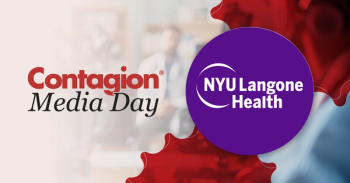Antibiotics and proton pump inhibitors continue to be associated with Healthcare-Associated infection (HAI). A recent population-based study published by the Journal of Antimicrobial Chemotherapy focuses on identifying risk factors for the acquisition and recurrence of Clostridioides difficile infection (CDI), specifically examining the combined short and long-term effects of antibiotics and proton pump inhibitors (PPIs) on CDI risk and recurrence. The study found that both recent and earlier use of these medications significantly increases the risk of CDI, particularly when antibiotics and PPIs are used concurrently.
Compared to the control group, the joint effect of recent use of PPIs and antibiotics on the risk of CDI was more pronounced, with a combined odds ratio antibiotic and PPIs (ORAB+PPI) of 17.51 (17.48–17.53), which is higher than the individual effects of antibiotics ORAB = 15.37 (14.83–15.93) and PPIs ORPPI = 2.65 (2.54–2.76) alone. The effect was less marked for exposures occurring in the preceding months. Additionally, dose-response analyses indicated a stronger correlation between increased exposure and CDI risk, especially with recent use, where the odds ratio (OR) increased to 6.32 (6.15–6.49) for antibiotics and 1.65 (1.62–1.68) for PPIs per additional prescription.
“As expected, a recent exposure to antibiotics has a higher impact compared to preceding usage, yet for PPIs this difference was less pronounced,” explain investigators. “A potential reason is the microbiome still being disrupted and unbalanced—and hence more susceptible after antibiotic exposure, while PPIs are often used over prolonged periods of time, hindering microbiome restoration and facilitating a continued state of dysbiosis.”
Main Takeaways
- The combined recent use of antibiotics and PPIs substantially elevates the risk of CDI.
- The study demonstrates a dose-response relationship, where increased exposure to these medications, particularly recent use, is correlated with a higher risk of both initial CDI and its recurrence.
- The results of the study call for a reevaluation of prescription practices involving antibiotics and PPIs.
In comparison to those without recurrent CDI (rCDI), both recent ORAB = 1.30 (1.23–1.38) and prior ORAB = 1.23 (1.16–1.31); ORPPI = 1.12 (1.03–1.21) use of antibiotics and PPIs impacted the risk of recurrence, although there was no significant interaction between them. Antibiotics such as recent macrolides, lincosamides, streptogramins, and other antibacterials including nitroimidazole derivatives, non-penicillin beta-lactams, and quinolones were most strongly associated with CDI risk and recurrence. Additionally, both recent and previous PPI use further elevated the risk of CDI when used in conjunction with nearly all classes of antibiotics.
“For recurrence, we only looked at exposure prior to the first CDI episode, since clinically, it would be useful to predict who is most likely to have recurrence from the start, as this may alter follow-up and treatment decisions. Follow-up may be more frequent for individuals with a higher risk for recurrence, or duration and dosing of antibiotics may be adapted,” according to the investigators. “Our findings suggests that individuals who acquired CDI after exposure to macrolides, lincosamides or streptogramins (J01F) are those most likely to experience a recurrence (OR = 1.42), with a similar risk for those on other bacterials (J01X/P01AB; OR = 1.43), and also an important risk increase for non-penicillin beta lactams (OR = 1.28).”
This study encompassed 43,152 patients diagnosed with CDI in Sweden from 2006 to 2019, along with 355,172 matched controls who did not have CDI. It investigated the effects of antibiotics and PPIs on the risk and rCDI, focusing on their use in recent (0–30 days) and preceding (31–180 days) periods before the initial CDI diagnosis. The study employed multivariable conditional logistic regression to analyze the data, presenting the results as ORs with 95% confidence intervals.
The study’s strengths are its large population base, high-quality nationwide data, and matched controls, which minimized selection and information biases. Adjustments for factors like comorbidities, demographics, and other drug use enhance the reliability of the findings. As for limitations, the potential misclassification of exposure, since the study only captured outpatient antibiotic use and assumed regular users of over-the-counter PPIs would opt for prescription versions. Additionally, the study could not assess compliance with prescribed treatments. This, along with the potential underestimation of actual antibiotic use duration due to reliance on defined daily doses per package rather than actual prescribed duration, could impact the accuracy of the results.
In conclusion, this study's findings should prompt healthcare providers to exercise greater caution when prescribing antibiotics and PPIs and call for a critical reevaluation of current prescription practices. Overall, the findings point towards the necessity of more careful management of these medications to mitigate the risk of CDI, especially among populations at higher risk for CDI.
Reference
1. Moreels N, Boven A, Gressani O, Andersson F, Vlieghe E, et. al. The combined effect of systemic antibiotics and proton pump inhibitors on Clostridioides difficile infection and recurrence. Journal of Antimicrobial Chemotherapy. Published January 24, 2024. Accessed January 30, 2024.https://doi.org/10.1093/jac/dkae012




















































































































































































































































































